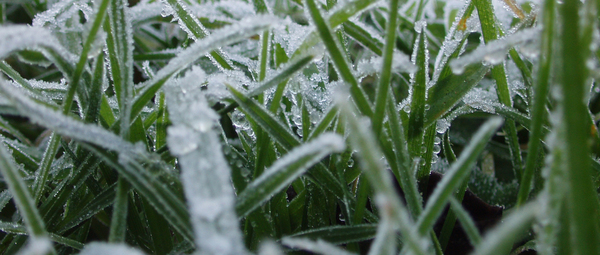Like most plants, lawns need some extra care to winterize them before they fall into dormancy at the end of each year. Following these tips can help ensure your lawn survives the cold and greens up beautifully in the spring without any issues.

Tips to Winterize Your Lawn
Fall is the best time to give lawns one last good dose of fertilizer to help stimulate root growth during winter dormancy. Fall feeding is one of the most critical of all feeding times as a healthy, stable plant can better endure the hardships of winter. Winterizing fertilizers build winter hardiness, stem strength, and disease resistance in lawns, trees, and shrubs.
What is a Winterizer?
Your lawn’s nutrient needs change in the fall as it prepares for the cold weather ahead. Winterizing fertilizers are high in potassium, typically noted on most fertilizer labels by the chemical symbol K, and shown as the third number listed on the fertilizer’s N-P-K ratio. Potassium is a very important nutrient, working at the cellular level to strengthen and harden plants from top to bottom, increasing their ability to withstand cold and stress. Potassium also helps plants to absorb other nutrients, making it a crucial component of balanced feeding for your lawn.
The other two primary nutrients in fertilizers are nitrogen, the first number (chemical symbol: N), which promotes leaf and stem growth; and phosphorus, the middle number (chemical symbol: P), which enhances root growth and fruit production.
Commercial winterizing fertilizers usually contain higher levels of potassium and lower levels of nitrogen than early-season “Lawn Food” type fertilizers. For example, Fertilome’s Winterizer & Weed Preventer II (For Southern Grasses) fertilizer has an N-P-K number of 10-0-14.
Should I use a Winterizer fertilizer on my lawn?
The best way to determine what your lawn needs is to conduct a soil test, like Woerner’s Soil Kit. If the results show inadequate levels of potassium in your soil in the fall, you should apply a winterizer.
What Else can I do to WInterize my Lawn?
Keep lawns free of excessive leaf debris and other litter. This will keep the grass damp, creating favorable spots for diseases and fungi to take hold. You limit these effects by either mulching leaves into smaller pieces with a lawn mower, or taking the time to rake or blow them completely off the lawn.
Remember to take time to service your lawn care equipment over the winter and into spring. This includes cleaning and lubricating your machines, sharpening or replacing blades, and replacing any old or worn-out equipment in preparation for the next year.
